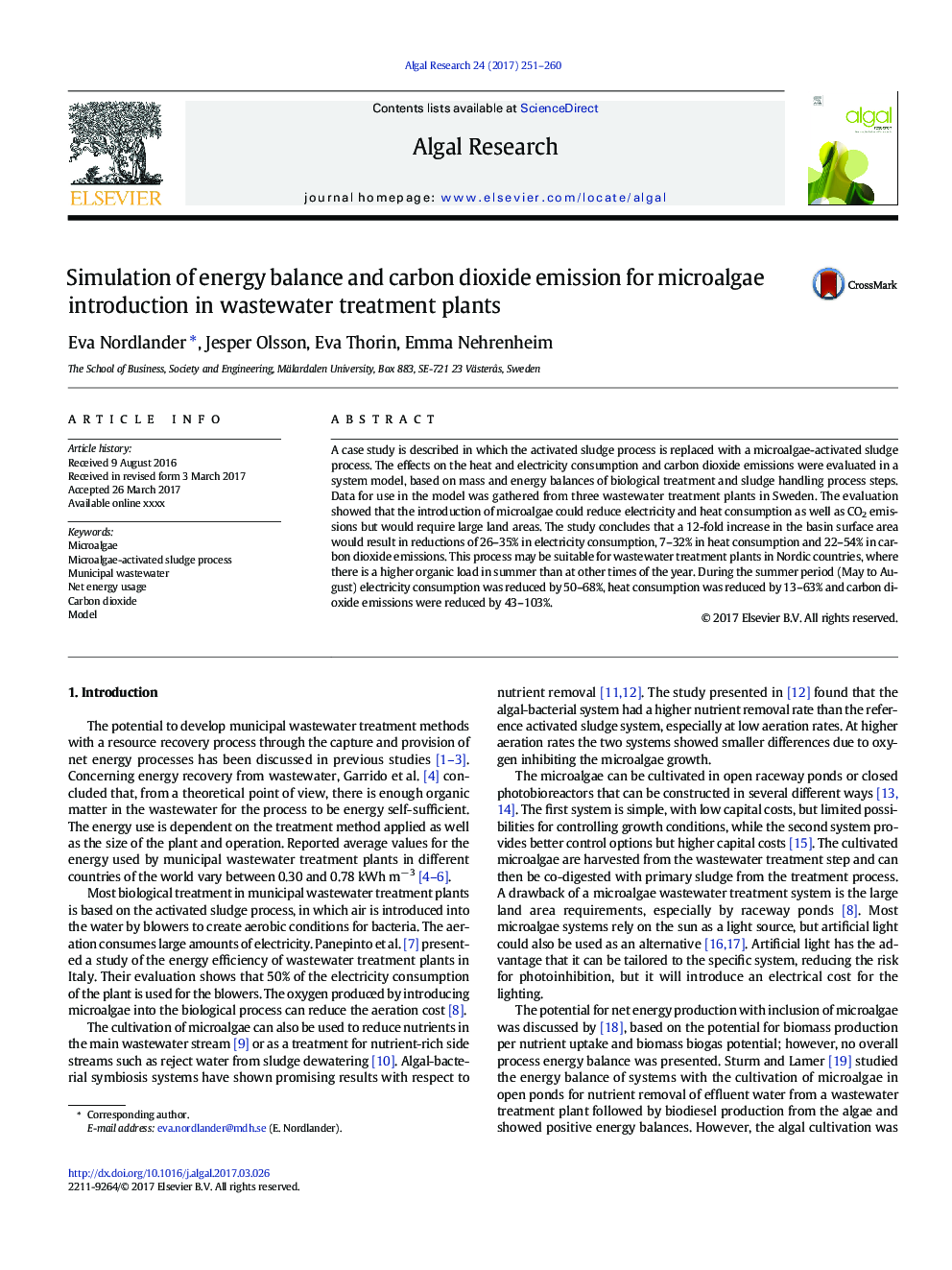| کد مقاله | کد نشریه | سال انتشار | مقاله انگلیسی | نسخه تمام متن |
|---|---|---|---|---|
| 5478479 | 1399266 | 2017 | 10 صفحه PDF | دانلود رایگان |
عنوان انگلیسی مقاله ISI
Simulation of energy balance and carbon dioxide emission for microalgae introduction in wastewater treatment plants
ترجمه فارسی عنوان
شبیه سازی تعادل انرژی و انتشار دی اکسید کربن برای معرفی میکروالاها در تاسیسات تصفیه فاضلاب
دانلود مقاله + سفارش ترجمه
دانلود مقاله ISI انگلیسی
رایگان برای ایرانیان
کلمات کلیدی
ترجمه چکیده
یک مطالعه موردی است که در آن فرآیند لجن فعال با یک لجن فعال فعال با میکرولیگا جایگزین شده است. اثرات مصرف گرما و الکتریسیته و انتشار دی اکسید کربن در یک مدل سیستم، بر اساس توازن توده ای و انرژی فرآیندهای زیست محیطی و مراحل فرآوری لجن، ارزیابی شد. داده ها برای استفاده در مدل از سه ایستگاه تصفیه پساب در سوئد جمع آوری شد. ارزیابی نشان داد که معرفی مایکروویو ها می تواند مصرف برق و گرما را کاهش دهد و همچنین انتشار گازهای گلخانه ای را کاهش دهد، اما به مناطق بزرگ زمین نیاز دارد. این مطالعه نشان می دهد که افزایش 12 درصدی سطح حوضه موجب کاهش 26 تا 35 درصدی مصرف برق، 7/32 درصد در مصرف گرما و 22-54 درصد در انتشار دی اکسید کربن خواهد شد. این فرآیند ممکن است مناسب برای گیاهان تصفیه فاضلاب در کشورهای شمال اروپا، جایی که بارگیری آلی بالاتر در تابستان نسبت به زمان های دیگر سال باشد. در طول دوره تابستان (ماه تا اوت) مصرف برق به میزان 50-68٪ کاهش یافت، مصرف گرما به میزان 13-63٪ کاهش یافت و انتشار دی اکسید کربن به میزان 43 تا 103٪ کاهش یافت.
موضوعات مرتبط
مهندسی و علوم پایه
مهندسی انرژی
انرژی های تجدید پذیر، توسعه پایدار و محیط زیست
چکیده انگلیسی
A case study is described in which the activated sludge process is replaced with a microalgae-activated sludge process. The effects on the heat and electricity consumption and carbon dioxide emissions were evaluated in a system model, based on mass and energy balances of biological treatment and sludge handling process steps. Data for use in the model was gathered from three wastewater treatment plants in Sweden. The evaluation showed that the introduction of microalgae could reduce electricity and heat consumption as well as CO2 emissions but would require large land areas. The study concludes that a 12-fold increase in the basin surface area would result in reductions of 26-35% in electricity consumption, 7-32% in heat consumption and 22-54% in carbon dioxide emissions. This process may be suitable for wastewater treatment plants in Nordic countries, where there is a higher organic load in summer than at other times of the year. During the summer period (May to August) electricity consumption was reduced by 50-68%, heat consumption was reduced by 13-63% and carbon dioxide emissions were reduced by 43-103%.
ناشر
Database: Elsevier - ScienceDirect (ساینس دایرکت)
Journal: Algal Research - Volume 24, Part A, June 2017, Pages 251-260
Journal: Algal Research - Volume 24, Part A, June 2017, Pages 251-260
نویسندگان
Eva Nordlander, Jesper Olsson, Eva Thorin, Emma Nehrenheim,
